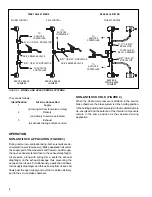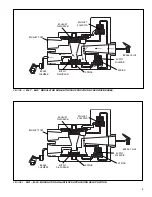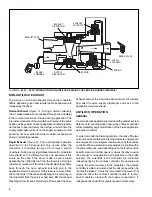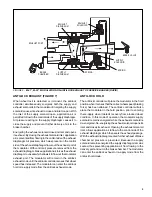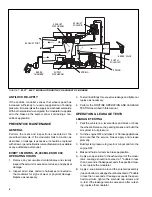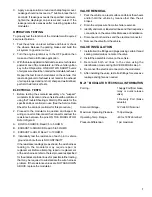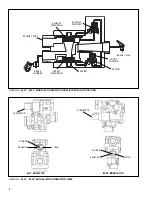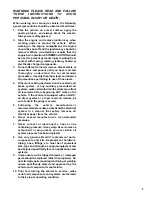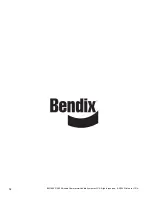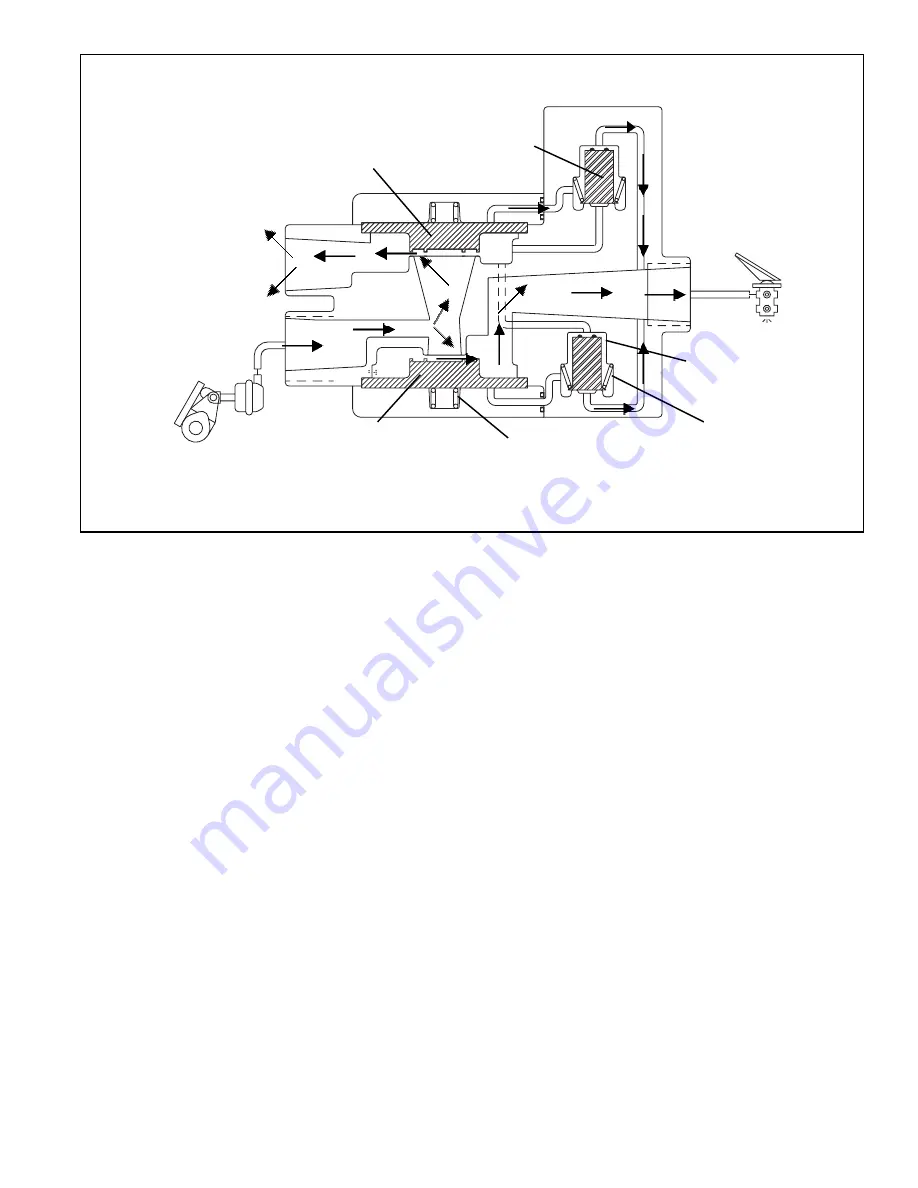
5
ANTILOCK EXHAUST (FIGURE 7)
When wheel lock is detected, or imminent, the antilock
controller simultaneously energizes both the supply and
exhaust solenoids in the modulator. Energizing the supply
solenoid causes its exhaust to close and inlet to open. With
the inlet of the supply solenoid open, application air is
permitted to flow to the control side of the supply diaphragm.
Air pressure acting on the supply diaphragm causes it to
close the supply and prevent further delivery of air to the
brake chamber.
Energizing the exhaust solenoid closes its inlet and opens
its exhaust. By closing the exhaust solenoid inlet, application
air is prevented from flowing to the control side of the exhaust
diaphragm. Air pressure, which was present on the control
side of the exhaust diaphragm flows out the exhaust port of
the modulator. With control air pressure removed from the
exhaust diaphragm, brake application air forces the exhaust
diaphragm to unseat which allows it to flow out the modulator
exhaust port. The modulator will remain in the antilock
exhaust mode until the antilock controller senses that wheel
speed has increased. The modulator can enter the antilock
hold or re-apply mode from the antilock exhaust mode.
ANTILOCK HOLD
The antilock controller will place the modulator in the hold
position when it senses that the correct wheel speed (braking
force) has been attained. The antilock controller will also
place the modulator in the hold position, prior to entering
the re-apply, when it detects recovery from a locked wheel
condition. In this mode of operation the modulator supply
solenoid remains energized while the exhaust solenoid is
de-energized. De-energizing the exhaust solenoid opens its
inlet and closes its exhaust. Opening the exhaust solenoid
inlet, allows application air to flow to the control side of the
exhaust diaphragm which then seals the exhaust passage.
With the exhaust diaphragm seated, further exhaust of brake
chamber air pressure is prevented. Because the supply
solenoid remains energized the supply diaphragm remains
seated, thus preventing application air from flowing to the
delivery port and out to the brake chamber. The modulator
can enter the antilock exhaust or re-apply mode from the
antilock hold mode.
FIGURE 6 -
M-21
™
, M-22
™
MODULATOR NON-ANTILOCK EXHAUST OF SERVICE BRAKES (RAPID)
BRAKE VALVE
SPRING
SUPPLY
DIAPHRAGM
SUPPLY
SOLENOID
SPRING
EXHAUST
DIAPHRAGM
EXHAUST
SOLENOID
BRAKE
CHAMBER
EXHAUST PORT


